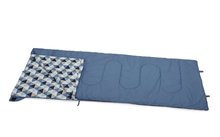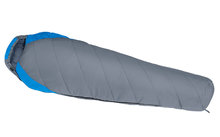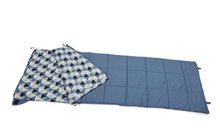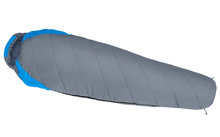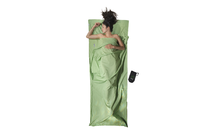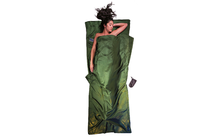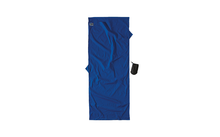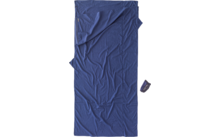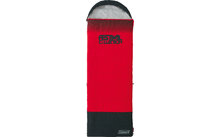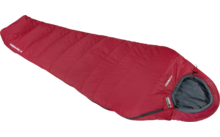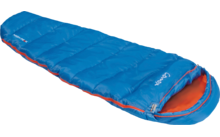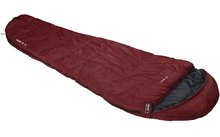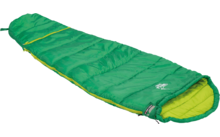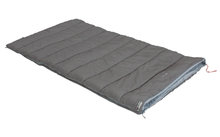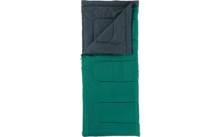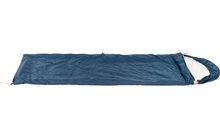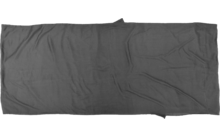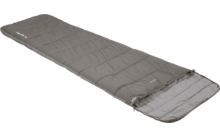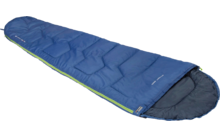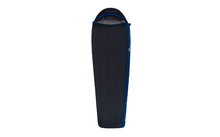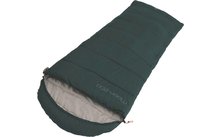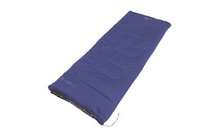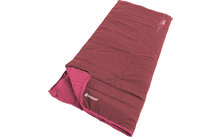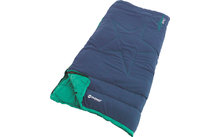Sleeping bags
Bringing full bedding on every camping trip can be bulky and impractical. A sleeping bag is the ideal solution — it's compact, lightweight, and easy to transport. One of the key advantages of sleeping bags is their ability to adapt to different weather conditions and seasons, making them a reliable choice for year-round outdoor use.
Whether you're bikepacking, hiking, attending a festival, or staying in a caravan or mobile home, there's a sleeping bag designed for every type of trip. Its versatility and practicality make it an essential part of any camping checklist.
Read more about Sleeping bags ...
Restful Nights in the Sleeping Bag
The Right Size of Sleeping Bags
For optimal thermal performance, a sleeping bag must fit the body properly. If the sleeping bag is too long or too wide, it creates excess air space that must be warmed up, which can lead to heat loss through convection. A poorly fitting sleeping bag often feels colder during the night.
On the other hand, a sleeping bag that is too small compresses the insulation at the feet, shoulders, and knees, creating cold spots. Smaller individuals should choose a shorter sleeping bag to minimize empty space. Alternatively, extra space in the foot area can be filled with clothing or tied off—especially useful for children.
Key EU Temperature Ratings (EN 13537)
Since 2002, the European standard EN 13537 has provided a standardized way to classify the thermal performance of sleeping bags. Using a test dummy equipped with sensors inside a climate chamber, the following temperature ranges are determined:
- Tmax (Maximum Temperature): The upper comfort limit for the “average man” without sweating.
- Tcomf (Comfort Temperature): The temperature at which a “standard woman” can sleep comfortably (25 years, 60 kg, 160 cm).
- Text (Extreme Temperature): The survival limit for a “standard woman” under extreme cold for up to 6 hours—hypothermia risk present.
Sleeping Comfort Without a Bed
For extra comfort in a sleeping bag, use a thermal or camping mat. Many models from Berger Camping are self-inflating and easy to pack, making them ideal for any camping trip.
For the highest level of sleeping comfort, choose an inflatable air bed. These are quick to inflate—many even have built-in pumps—and some models are designed for two people.
Complete your sleeping setup with travel pillows and seat pads. Inflatable pillows are lightweight, space-saving, and can double as neck, back, or seat cushions.
Blanket Sleeping Bags
Blanket sleeping bags are known for their rectangular shape and freedom of movement. They consist of two blankets joined by a zip. When fully unzipped, they can be used as a regular blanket — perfect for warmer nights or indoor use.
Mummy Sleeping Bags
Mummy sleeping bags are thermally efficient, lightweight, and compressible. Their body-hugging shape minimizes heat loss, making them ideal for colder temperatures. Choose the correct size to ensure maximum insulation.
Washing Instructions
Most sleeping bags can be machine-washed at 30°C. Use only one-third the usual amount of detergent and avoid fabric softeners. Spin briefly three times and dry at 30°C in a dryer for best results.
Proper Storage
After use, always air out the sleeping bag and store it in a dry, loose location—not in the compression sack.

